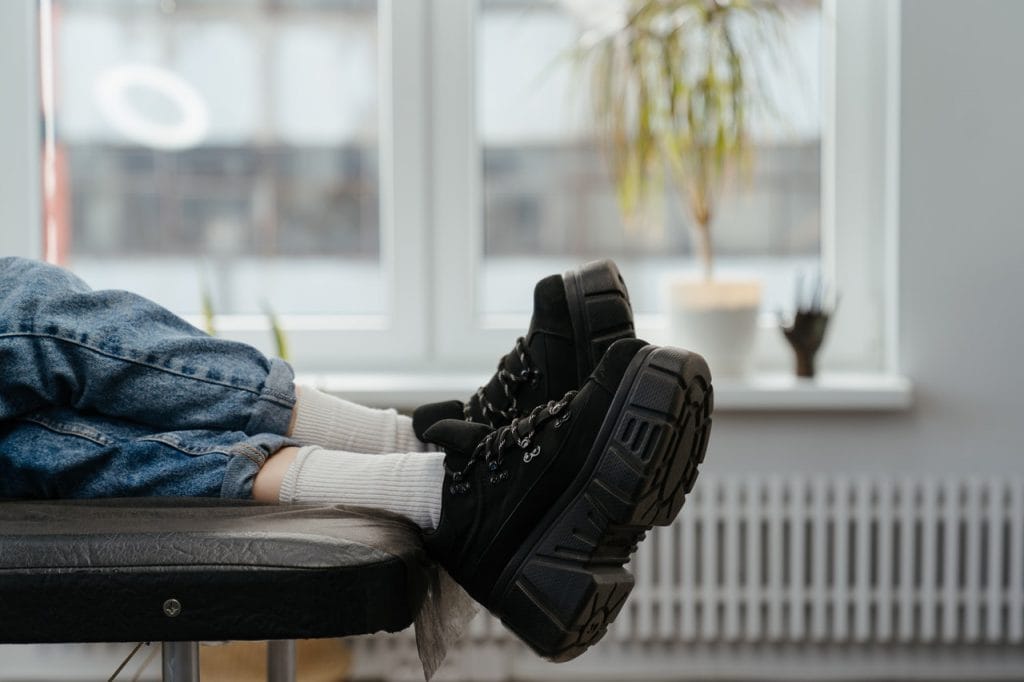Falls and slips are the biggest cause of workplace injury. It is very difficult to come across a 100% fall-proof floor under normal circumstances. Nonetheless, slipping can lead to fatal results by causing permanent injury. Ideally, it is the onus of the property owner to safeguard the walker by constructing the floors in such a manner that they offer a solid grip on shoes. But given the rising number of accidents occurring from slips, it becomes necessary to start with choosing a specialized shoe that can prevent all such mishaps from occurring in the first place.
The shoe needs to deliver the right level of comfort without causing any distraction as you walk around. While there is no one size fits all approach when it comes to choosing the right slip-resistant footwear, you need to assess the condition of your worksite to decide on the shoes which shall deliver the best performance. Everyone is not aware of the types of shoes which can prevent slips and falls. Keeping such things in mind, we have come up with a detailed guide to help ladies choose the perfect footwear which can safeguard their every step whether at work or play:
1. Shoe Outsole
The slip-resistant quality of a shoe is determined to a great extent by its outsole which is why you should notice the shape of the tread design in the outsole’s pattern. These shapes might range from circles to hexagons, squares, and triangles. The shape has a big role to play in determining the level of grip while walking through an oily or wet surface. A tunnel is created by the shape through which liquid gets dispersed for creating the slip-resistant effect. While every shape offers a certain level of slip-resistance, the ones with a circle-grip outsole are considered the best as the lack of any flat edge makes the circular shape act as a moving pad. More rubber hits the floor to disperse water rapidly with every step taken on an oily or wet surface. You can opt for an outsole with small incisions or snipes which segregate the treaded shape in 3-4 movable parts for benefitting from better traction.
These snipes add to the slip-resistant effect by channeling more liquid to the outsole’s outer portion. Similarly, the flat edge of outsoles having triangle, hexagonal or square shapes buffer the liquid from moving away from the shoe sole adding to the chances of slippage.
2. Depth & Space of the Tread
The slip resistance of the shoe is determined to a great extent by the shapes on the sole’s pattern. However, there needs to be an adequate gap between each shape on the outsole’s pattern so that the liquid gets channeled to the outsole’s outer edges. If the liquid stays entrapped underneath the sole, then it could lead to a hydroplaning effect. You can ensure maximum safety by getting shoes having a minimum of two millimeters of space between the tread patterns. A similar concept is also applicable in the case of tread depth. The entrapped liquid won’t be able to disperse quickly if adequate space is not there between the bottom of the shoe and the bottom of the tread. This increases chances of slippage and so you need to opt for shoes having a minimum tread depth of 3 millimeters.
Shoe tread tends to get reduced over time just like the tires of your automobile. This is why you need to monitor the tread depth of your shoe continuously. The shoes need to be replaced immediately once you notice signs of the tread depth wearing down. Time taken for the tread to wear depends totally on the surface over which you travel and there is no set guideline for the same. More abrasive flooring such as concrete will require frequent replacement of the shoe. As a rule of thumb, you can keep watch over the wearing away of snipe grooves and get new shoes as and when that happens.
Also read: Trending Dresses for Girls and Women
3. Comfort
Once the slip resistance attribute has been cared for, you need to consider the level of comfort provided by your slip-resistant footwear. Ideally, its insole should offer extra heel support for cushioning the area especially if you plan to be on your toes throughout the day. The soles should be such that they can support your weight so that you can take the steps comfortably.
4. Fit
Our chances of tripping increase when the shoe sole is larger than the size of our foot. Most of us tend to buy shoes that are slightly bigger than our size for wearing extra socks during winter months and basking in a snug feeling. But it always pays to invest in footwear in the correct size.
5. Weight of the Shoe
If different styles of footwear guarantee the same degree of protection, it is always best to proceed with the lightest one as they tend to minimize foot fatigue. Though the weight of the shoe doesn’t seem like a big cause of concern initially, it can make a huge difference at the end of a tiring day.
Also read: Influencers Reveal Fashion Trends for Women
Conclusion
Choosing a shoe that is both oil and slip-resistant is important if you work in a place where you have to tread through liquid or oil-covered floor surfaces. Being aware of the environment will help you understand what you are dealing with so that you can find the most appropriate footwear for the occasion. If you have an idea of the material which makes the floor slippery, then you can convey this information to the footwear store while placing an order. The rate of slip and fall is higher for people residing in an icy hilly place compared to that of a plain dry environment. You will also require a more specialized shoe for working in a factory or workshop having greasy or wet floors. It becomes imperative to consider the purpose of a shoe while buying the same.







